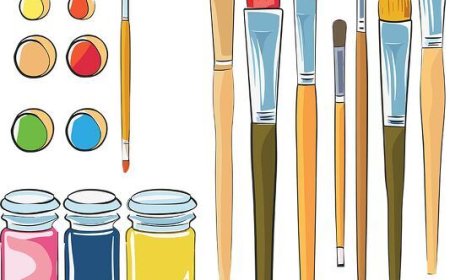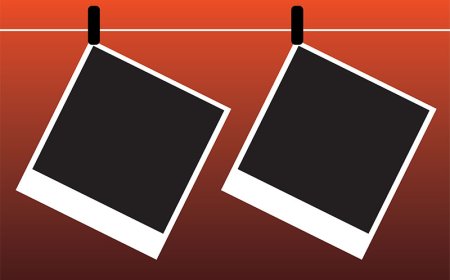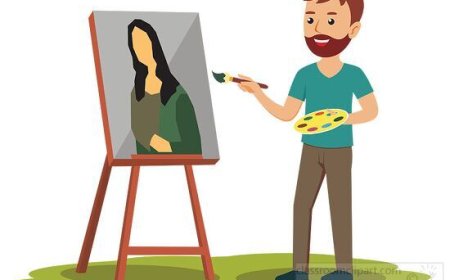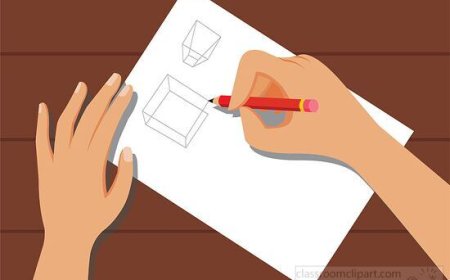Sculpture for Students – History, Materials, and How to Make 3D Art
Learn all about sculpture—from ancient statues to modern installations. Explore materials, techniques, famous sculptors, and how to create your own 3D art.
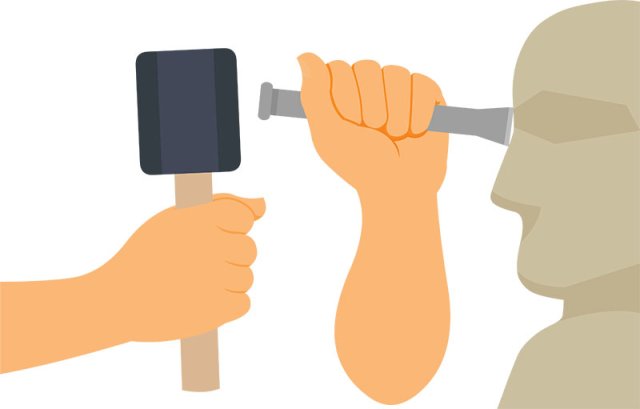
🗿 Sculpture: The Art of Shaping the World in 3D
🎨 Introduction
Sculpture is a form of visual art that you can see, touch, and walk around. While paintings are flat and drawings exist mostly on paper, sculptures are three-dimensional, meaning they have height, width, and depth. Sculptors shape materials like clay, stone, wood, and metal into art that tells stories, honors people, or just looks interesting and beautiful.
Whether it’s an ancient statue, a carved wooden mask, or a giant metal sculpture in a public park, sculpture allows artists to bring their ideas into the real world in a physical way. In this article, you’ll explore what sculpture is, how it’s made, where it began, and how you can try sculpting yourself.
🗿 What Is Sculpture?
Sculpture is the art of creating three-dimensional forms by shaping, carving, modeling, or assembling different materials. It can be realistic, abstract, functional, or decorative. Some sculptures are small enough to fit in your hand; others are taller than buildings!
Unlike flat images, sculptures take up physical space. You can walk around them, look at them from all sides, and sometimes even interact with them. Because they exist in the real world, they must be carefully designed to stand, balance, and last over time.
Sculptures can be free-standing (viewed from all sides) or relief sculptures, which are attached to a background like a wall and only partly stick out.
🧱 Common Sculpture Materials
Sculptors can work with just about anything, but these materials are most commonly used:
- Clay – Soft, moldable, and perfect for beginners. Can be fired in a kiln to become hard.
- Stone – Hard and durable. Used in ancient statues and monuments (like marble or granite).
- Wood – Can be carved or assembled. Often used in traditional and folk art.
- Metal – Strong and shiny. Used in modern sculpture (like bronze, steel, or aluminum).
- Plaster – Lightweight and used for making molds or casts.
- Found objects – Everyday items like plastic, wire, or fabric used to build creative sculptures.
Each material requires different tools and techniques. Choosing the right material depends on the size, style, and purpose of the sculpture.
🧰 Sculpture Techniques
Sculptors use several methods to shape their materials into finished art. These are the main techniques:
- Carving – Cutting away material to reveal the final form (used with stone or wood).
- Modeling – Shaping a soft material like clay by hand or tools.
- Casting – Pouring liquid material (like plaster or metal) into a mold and letting it harden.
- Assembling – Putting different parts or materials together to make one sculpture.
- Welding – Melting metal parts together to build large or complex sculptures.
- Additive vs. Subtractive – Additive means building up material (like with clay), while subtractive means removing material (like carving stone).
Some sculptures use a combination of techniques and materials to achieve a unique look or texture.
🕰️ A Brief History of Sculpture
Sculpture has existed since prehistoric times. The earliest known sculpture, the Venus of Willendorf, is over 25,000 years old and was carved from limestone.
In ancient Egypt, sculptures were used to honor gods and pharaohs. These figures were usually stiff and symmetrical. The Greeks and Romans later focused on realism and beauty, creating lifelike marble statues that still influence artists today.
During the Middle Ages, sculpture became an important part of churches and cathedrals, with relief carvings and statues telling stories from the Bible.
In the Renaissance, artists like Michelangelo brought sculpture to new levels. His famous statue David was carved from a single block of marble and is considered one of the greatest artworks in history.
In modern times, sculptors began to experiment with new materials, abstract shapes, and massive public art installations. Artists like Auguste Rodin, Henry Moore, and Louise Bourgeois showed that sculpture can be emotional, playful, symbolic, or strange.
👩🎨 Famous Sculptors and Their Work
- Michelangelo (Italy) – Created the iconic marble statue David and the Pietà.
- Auguste Rodin (France) – Known for The Thinker, a powerful bronze sculpture showing deep thought.
- Alexander Calder (USA) – Invented the mobile, a moving sculpture that hangs in balance.
- Louise Bourgeois (France/USA) – Created large emotional sculptures like the spider Maman.
- Barbara Hepworth (UK) – Focused on abstract, organic shapes carved from stone.
- Jeff Koons (USA) – Known for giant balloon-like sculptures made from stainless steel.
🧬 Sculpture in Art Education
Sculpture is a key part of the Visual Arts in schools. According to the National Core Arts Standards, sculpture lessons help students:
- Create original 3D artwork using a variety of tools and materials.
- Present their work in galleries or classroom exhibitions.
- Respond to sculpture by describing how it makes them feel or what it means.
- Connect sculpture to personal experiences or cultural history.
Learning sculpture builds hand-eye coordination, spatial reasoning, creative problem-solving, and teamwork—skills that are useful in art, engineering, architecture, and everyday life.
🧒 How to Try Sculpture at Home or School
Step-by-Step Project: Make a Mini Animal Sculpture
- Choose your subject – A cat, turtle, snake, or bird is a fun place to start.
- Roll out your shapes – Make basic parts like the body, legs, and head.
- Attach pieces – Use water to smooth and stick parts together.
- Add texture – Use toothpicks or clay tools to add fur, feathers, or scales.
- Let it dry – Leave your sculpture to dry completely (usually 24–48 hours).
- Paint and decorate – Add color with acrylic paint once dry.
- Display it proudly!
Always wash hands and clean up tools after working with clay or plaster.
🧠 Key Vocabulary
| Word | Definition |
|---|---|
| Sculpture | A three-dimensional work of art |
| Relief | A sculpture attached to a flat surface |
| Carving | Cutting away material to shape a form |
| Modeling | Shaping a soft material like clay |
| Casting | Pouring material into a mold |
| Assembly | Building a sculpture by joining parts |
| Kiln | A special oven used to harden clay |
🌟 Interesting Facts About Sculpture
- The Statue of Liberty is a sculpture made from copper, standing over 300 feet tall.
- Ancient Greek sculptors often painted their marble statues, though the colors have faded over time.
- Some sculptures are made entirely from ice, sand, or even chocolate!
- Kinetic sculptures move with wind or motors and can look different every second.
- In some cultures, sculpture is used in rituals, storytelling, or even as musical instruments.
📚 Key Takeaways
- Sculpture is a form of 3D art made by shaping materials like clay, wood, and metal.
- It can be carved, modeled, cast, or assembled into many different forms.
- Sculptures have been created by artists for thousands of years, for decoration, worship, or storytelling.
- Students can make their own sculptures using simple tools and imagination.
- Sculpture helps build creative thinking and hands-on skills that apply to many areas of life.
🎯 Interactive Quiz
1. What makes sculpture different from drawing or painting?
A) It uses pencils
B) It's three-dimensional
C) It only uses clay
D) It’s always black and white
2. Which of the following is a technique for sculpture?
A) Blending
B) Carving
C) Doodling
D) Etching
3. What material is soft, moldable, and perfect for beginners?
A) Metal
B) Wood
C) Clay
D) Stone
4. What is a “relief” sculpture?
A) A sculpture made of paper
B) A sculpture that moves
C) A sculpture that is flat and attached to a surface
D) A sculpture with wheels
5. Which artist created the famous statue David?
A) Leonardo da Vinci
B) Pablo Picasso
C) Michelangelo
D) Vincent van Gogh


















































